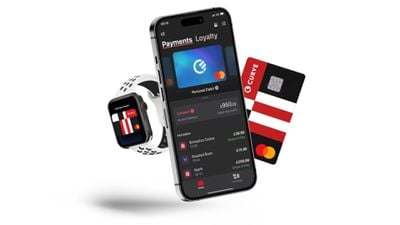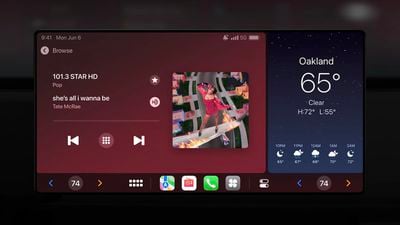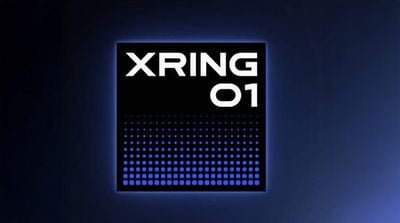On this week's episode of The MacRumors Show, we discuss all of the major announcements from Google's AI-focused I/O conference this week and the mysterious device former Apple design chief Jony Ive is designing at OpenAI.
At its
I/O 2025 conference, Google unveiled a wide range of artificial intelligence enhancements surrounding its Gemini AI platform. Chief among these is a
dedicated AI Mode for Google Search, which leverages contextual understanding to return more relevant, nuanced results and allows follow-up questions. Within Google Chrome, Gemini has also been integrated to assist with summarizing web content, composing messages, and providing intelligent suggestions. Gemini Agent Mode is designed to be an autonomous assistant that completes tasks on your behalf, while Gemini Personal Context pulls from your Gmail, Calendar, Docs, and more to offer personalized, proactive help.
Google introduced Gemini Live, which brings real-time AI assistance to iPhone users. The feature supports screen sharing, camera access, and integration with services like Google Calendar and Maps. The company also devoted time to generative models: Veo 3 for video generation, Imagen 4 for image synthesis, and Deep Research, a tool designed to provide thorough, AI-powered insights across complex subjects.
Moreover, Google introduced significant developments in wearable computing with Android XR, a new operating system designed specifically for augmented reality headsets and smart glasses. The platform gains features like live translation, turn-by-turn directions, and real-time contextual support powered by Gemini. Samsung will be the first partner to release a headset running Android XR later this year, followed by a smart glasses product.
Google's own smart glasses initiative was also showcased. The new glasses are equipped with in-lens displays, microphones, speakers, and cameras, allowing users to see and hear the world with real-time assistance from Gemini. The glasses will be designed in partnership with eyewear brands Gentle Monster and Warby Parker.
In other news, OpenAI this week set out plans to acquire io, a hardware startup co-founded by legendary former Apple design chief Jony Ive, in a deal valued at approximately $6.5 billion. The acquisition brings a team of influential former Apple designers, including Evans Hankey and Marc Newson, into OpenAI. The company is working on developing a new category of device described as a "third core device," envisioned to complement the smartphone and laptop without replicating either.
The new hardware is neither a phone nor a pair of glasses, but a compact, screenless device designed to sit on a desk or in a pocket. Unlike legacy devices, it apparently seeks to reduce dependence on screens and offer more ambient, contextual interactions with AI. According to reports, the device is aware of its surroundings through microphones and cameras, and integrates tightly with a user's life while remaining unobtrusive. OpenAI CEO Sam Altman has described the product as "the coolest piece of technology the world will have ever seen."
Development of the product remains highly secretive. Comparisons have been made to the Rabbit R1 and Humane AI Pin, but the involvement of Jony Ive and his team designing around OpenAI's industry-leading technology suggests that this product could be different. The device is expected to be revealed in late 2026.
The MacRumors Show has its own YouTube channel, so make sure you're subscribed to keep up with new episodes and clips.
You can also listen to The MacRumors Show on Apple Podcasts, Spotify, Overcast, or your preferred podcasts app. You can also copy our RSS feed directly into your podcast player.
If you haven't already listened to the
previous episode of The MacRumors Show, catch up to hear our discussion about the long-awaited rollout of Apple
CarPlay Ultra and Samsung's all-new S25 Edge, which is positioned to rival the
iPhone 17 Air later this year.
Subscribe to The MacRumors Show for new episodes every week, where we discuss some of the topical news breaking here on MacRumors, often joined by interesting guests such as John Gruber, Mark Gurman, Kevin Nether, Jon Prosser, Luke Miani, Matthew Cassinelli, Brian Tong, Quinn Nelson, Jared Nelson, Eli Hodapp, Mike Bell, Sara Dietschy, iJustine, Jon Rettinger, Andru Edwards, Arnold Kim, Ben Sullins, Marcus Kane, Christopher Lawley, Frank McShan, David Lewis, Tyler Stalman, Sam Kohl, Federico Viticci, Thomas Frank, Jonathan Morrison, Ross Young, Ian Zelbo, and Rene Ritchie.
The MacRumors Show is on X @MacRumorsShow, so be sure to give us a follow to keep up with the podcast. You can also head over to The MacRumors Show forum thread to engage with us directly. Remember to rate and review the podcast, and let us know what subjects and guests you would like to see in the future.
























 Note: MacRumors is an affiliate partner with Amazon. When you click a link and make a purchase, we may receive a small payment, which helps us keep the site running.
Note: MacRumors is an affiliate partner with Amazon. When you click a link and make a purchase, we may receive a small payment, which helps us keep the site running.














